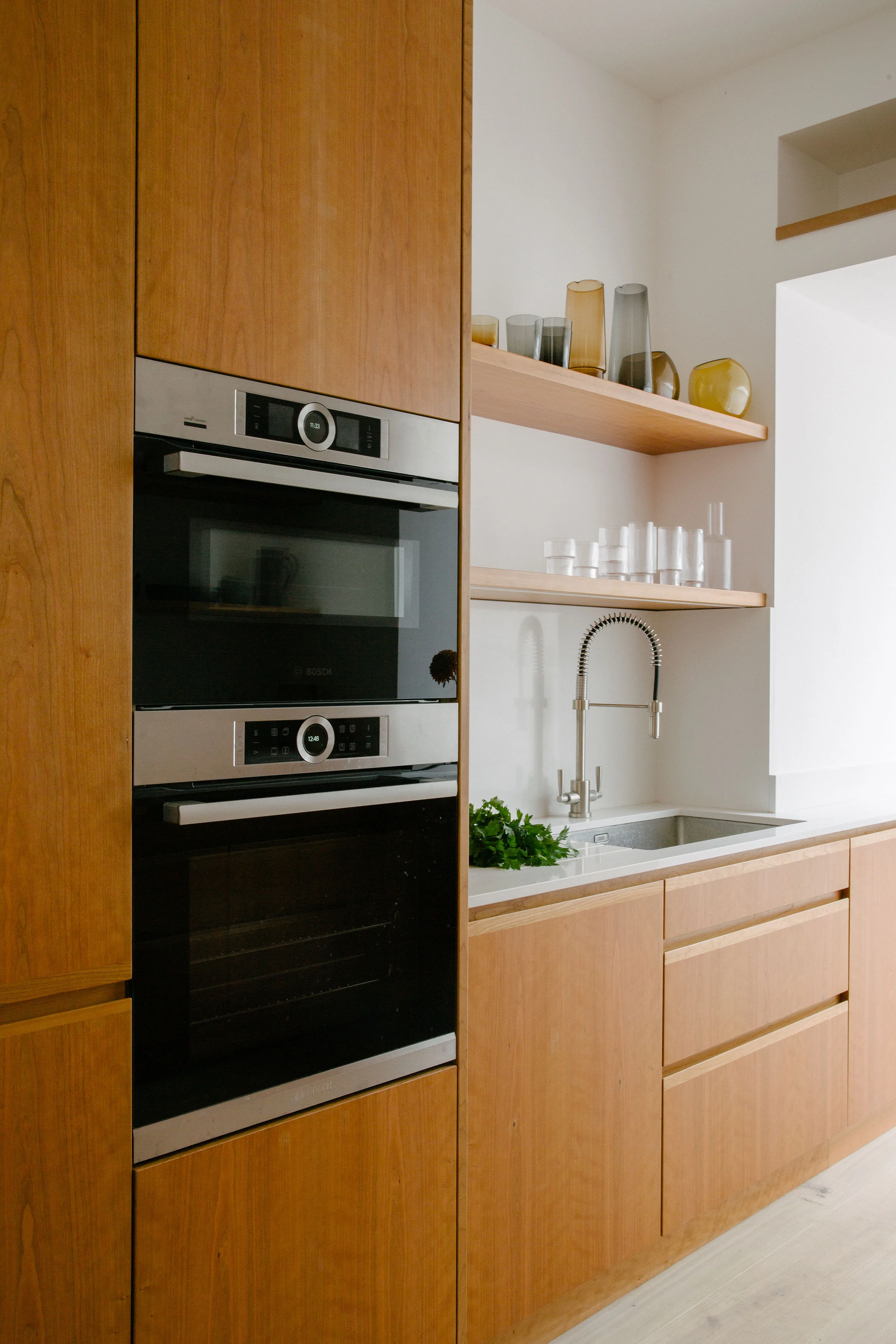A beginner’s guide to veneering
To some, the word “veneer” might bring to mind images of cheaply made or flimsy furniture but, these days, this representation is far from accurate!
In the hands of a skilled carpenter, veneer can be used to create stunning effects that would be impossible to achieve with solid wood. In fact, veneering is something of an ancient art, dating back to at least the Ancient Egyptians who used expensive wood veneers over cheaper timbers to create the distinctive designs on their furniture and sarcophagi.
What is veneering?
In woodworking, “veneer” refers to thin slices of wood that are glued onto core panels, such as wood or MDF, to produce parquet floors, doors and much more besides.
Veneer is sourced by slicing through large blocks of wood known as “flitches”. Slicing through the growth rings of a tree gives the veneer a grain that has a certain appearance and texture depending on the angle at which the wood was sliced. Every slicing process, for every type of tree species, gives a very distinct type of grain.
Types of veneer
There are many types of veneers available, each serving a particular purpose. Here are just a few:
Rotary Cut is where the log is mounted centrally and sliced around the circumference, following the growth rings, lending the veneer a bold grain that enables wide leaves to be produced.
Crown cut is where the log is halved and then sliced straight across, tangential to the growth rings. This tends to produce a veneer with a central area of strong figurative grain and a more linear effect at each edge.
Quarter cut is where the log is quartered, with each quarter being straight sliced at right angles to the growth rings, producing a veneer with a relatively uniform linear vertical grain.
Half round cuts are where the log is mounted off-centre, and then curved slices are taken slightly across the annular growth rings. This produces a veneer with some of the characteristics of both crown and rotary veneers.
The advantages of using veneers
As solid wood is prone to warping and splitting, it's unsuitable for use in flat doors (as opposed to panelled doors). Veneers on the other hand, can be laminated onto a stable substrate such as plywood or MDF, which is much less prone to warping and won't expand or contract with changes in temperature and humidity. Because of this, veneers can be used in projects that would be impossible for solid lumber.
Another advantage of veneer, and a reason why we love it so much, is its innate sustainability.
Furniture with wood veneer uses much less of the slow growing high grade timber than those made with solid wood, vastly extending the use that can be made from a harvest.
In addition, wood is known to have the least impact on total energy use, greenhouse gases, ecological resource use, etc. In fact, 70% less energy is required in the use of wood compared with any other building materials.
We’ve used carefully crafted veneers in some of our favourite kitchens to date. To check them out and learn more about the materials we’ve used, visit our kitchens page.



